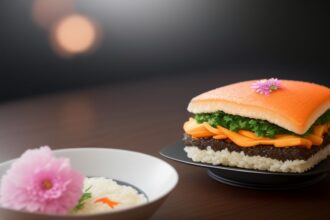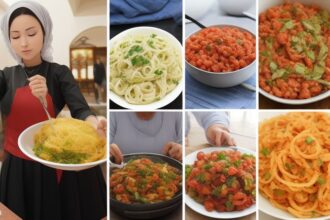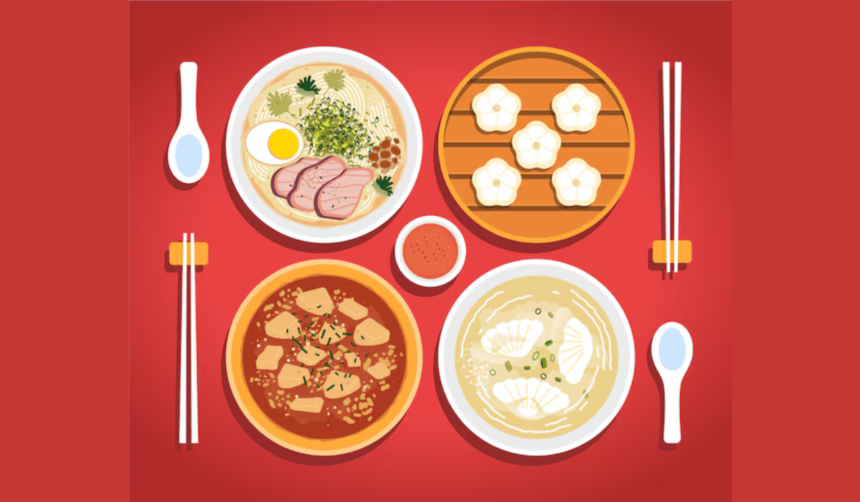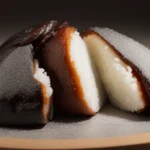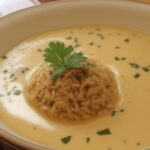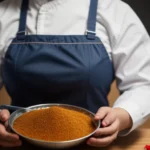Chinese cuisine is renowned worldwide for its unique flavors, aromas, and ingredients. From the spicy Sichuan dishes to the delicate dim sum, each dish is a masterpiece of culinary creativity. But what are the secret ingredients that make classic Chinese recipes so special? In this article, we will delve into the hidden gems of Chinese cooking and uncover the key elements that make these dishes so delicious.
1. The Magic of Soy Sauce: One of the most essential ingredients in Chinese cooking is soy sauce. This savory condiment is made from fermented soybeans, wheat, salt, and water. It adds a rich umami flavor to dishes, making them more complex and delicious. Whether used as a marinade, dipping sauce, or seasoning, soy sauce is a must-have in any Chinese kitchen.
2. The Versatility of Rice Vinegar: Rice vinegar is another key ingredient in Chinese cooking. Made from fermented rice, this tangy and slightly sweet vinegar adds a bright acidity to dishes. It is commonly used in stir-fries, salads, and dipping sauces. Its ability to balance flavors and tenderize meat makes it an essential component of many classic Chinese recipes.
3. The Power of Ginger: Ginger is a versatile ingredient that adds a spicy and aromatic kick to Chinese dishes. Whether sliced, minced, or grated, ginger imparts a warm and peppery flavor to stir-fries, soups, and marinades. It also has digestive and anti-inflammatory properties, making it a beneficial addition to any dish.
4. The Heat of Chilies: Chilies are a staple in many Chinese dishes, particularly in regions like Sichuan and Hunan. Whether dried, fresh, or in the form of chili paste, these fiery peppers add a bold and spicy flavor to dishes. Chilies can range from mild to extremely hot, so it is essential to use them in moderation to avoid overpowering the dish.
5. The Sweetness of Hoisin Sauce: Hoisin sauce is a thick and sweet condiment made from soybeans, sugar, vinegar, and spices. It is commonly used as a glaze for meats, a dipping sauce for spring rolls, or a flavor enhancer in stir-fries. Its rich and complex flavor profile adds depth and sweetness to dishes, making it a favorite in Chinese cuisine.
6. The Aroma of Five-Spice Powder: Five-spice powder is a blend of five aromatic spices – star anise, cloves, cinnamon, Sichuan peppercorns, and fennel seeds. This fragrant and pungent spice mix adds a unique flavor to dishes, particularly meats and roasted vegetables. Its warming and complex profile makes it a key ingredient in many classic Chinese recipes.
7. The Umami of Oyster Sauce: Oyster sauce is a thick and savory condiment made from oyster extracts, soy sauce, sugar, and salt. It has a deep and rich umami flavor that enhances the taste of dishes, particularly stir-fries and braised meats. Oyster sauce adds a luscious and glossy finish to dishes, making them more appetizing and flavorful.
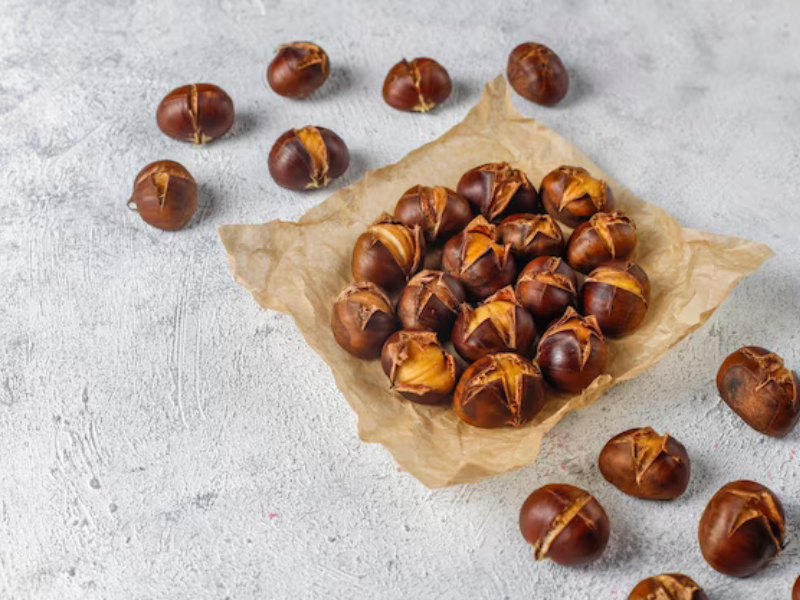
8. The Crunch of Water Chestnuts: Water chestnuts are a popular ingredient in Chinese cooking, particularly in stir-fries and salads. These crunchy and slightly sweet tubers add a textural contrast to dishes, making them more interesting and enjoyable. Water chestnuts can be sliced, diced, or julienned to add a crisp and refreshing element to recipes.
9. The Fragrance of Sesame Oil: Sesame oil is a fragrant and nutty oil made from toasted sesame seeds. It adds a rich and aromatic flavor to dishes, particularly stir-fries, noodles, and salads. Sesame oil is also used as a finishing oil to drizzle over dishes for extra flavor and aroma. Its distinctive taste and aroma make it a versatile ingredient in Chinese cooking.
10. The Creaminess of Tofu: Tofu is a versatile and nutritious ingredient made from soy milk. It has a smooth and creamy texture that adds richness to dishes, particularly in soups, stir-fries, and braised dishes. Tofu is a great source of protein and can absorb flavors easily, making it a favorite ingredient in vegetarian and vegan Chinese recipes.
11. The Bite of Garlic: Garlic is a pungent and aromatic ingredient that adds depth and flavor to Chinese dishes. Whether minced, chopped, or crushed, garlic adds a bold and savory taste to stir-fries, sauces, and marinades. Its ability to enhance the taste of other ingredients makes it a crucial component of many classic Chinese recipes.
12. The Texture of Bamboo Shoots: Bamboo shoots are a common ingredient in Chinese cooking, particularly in stir-fries and soups. These tender and crunchy shoots add a fresh and earthy flavor to dishes, making them more interesting and textured. Bamboo shoots can be sliced, diced, or julienned to add a unique and delicate element to recipes.
13. The Balance of Dark Soy Sauce: Dark soy sauce is a thick and sweet sauce made from soybeans, wheat, sugar, and salt. It has a deep and rich flavor that adds color and complexity to dishes, particularly braised meats and stews. Dark soy sauce is less salty than regular soy sauce and adds a subtle sweetness to dishes, making them more balanced and flavorful.
14. The Refreshing Element of Cilantro: Cilantro, also known as coriander, is a herb with a fresh and citrusy flavor. It is commonly used as a garnish in Chinese dishes to add a pop of color and freshness. Cilantro can be chopped or torn to sprinkle over dishes, adding a bright and herbaceous element to recipes. Its fragrant and refreshing taste complements the rich and savory flavors of Chinese cuisine.
15. The Delicate Flavor of Green Onions: Green onions, also known as scallions, are a milder and sweeter alternative to regular onions. They add a delicate and aromatic flavor to Chinese dishes, particularly stir-fries, soups, and dumplings. Green onions can be sliced, diced, or minced to add a subtle onion flavor and a pop of color to dishes. Their crisp texture and mild taste make them a versatile and essential ingredient in Chinese cooking.
In conclusion, the secret ingredients of classic Chinese recipes are what make them so special and delicious. From the umami-rich soy sauce to the fragrant sesame oil, each ingredient plays a crucial role in creating the bold and complex flavors of Chinese cuisine. By incorporating these key elements into your cooking, you can unlock the hidden gems of Chinese cuisine and create authentic and flavorful dishes that will impress your friends and family. So gather your woks, knives, and ingredients, and start exploring the wonderful world of Chinese cooking!
FAQs about “Uncovering the Secret Ingredients of Classic Chinese Recipes”
- What makes “Uncovering the Secret Ingredients of Classic Chinese Recipes” an essential read for cooking enthusiasts? This book offers a unique insight into the world of Chinese cuisine, unveiling the secret ingredients and techniques used in classic Chinese recipes, providing a deeper understanding of the flavors and traditions behind these dishes.
- Which classic Chinese recipes and ingredients are featured in this guide? “Uncovering the Secret Ingredients of Classic Chinese Recipes” features a curated selection of classic Chinese recipes, including favorites like Kung Pao chicken, Peking duck, Mapo tofu, and dumplings, along with the secret ingredients and techniques that make these dishes so special.
- How does this book shed light on the cultural significance of Chinese cuisine? This book sheds light on the cultural significance of Chinese cuisine by exploring the historical roots, regional variations, and culinary traditions that have shaped Chinese cooking over thousands of years, providing insights into the cultural context behind each dish.
- Are specific cooking techniques and flavor profiles highlighted in this book to exemplify classic Chinese cuisine? Yes, this book highlights specific cooking techniques, flavor profiles, and secret ingredients used in classic Chinese cuisine, showcasing the diversity and complexity of flavors that characterize Chinese cooking.
- Can readers expect to find practical tips and recipes for preparing classic Chinese dishes at home from this book? Absolutely! “Uncovering the Secret Ingredients of Classic Chinese Recipes” provides practical tips, cooking techniques, and authentic recipes for readers to recreate the flavors of China in their own kitchens, allowing them to discover the secrets behind their favorite Chinese dishes.
Advantages:
- Intrigue: The phrase “Uncovering the Secret Ingredients” in the title piques curiosity, suggesting that the content will reveal hidden or lesser-known components of classic Chinese recipes, attracting readers who seek insider knowledge.
- Educational Value: By promising to uncover secret ingredients, the title suggests that readers will gain valuable insights into the unique flavors, techniques, and cultural significance of classic Chinese recipes, enriching their understanding of Chinese cuisine.
- Culinary Exploration: The title encourages readers to explore the depth and complexity of Chinese cuisine by delving into the secret ingredients that contribute to the distinctive flavors and aromas of classic Chinese dishes.
- Practical Guidance: As a guide to classic Chinese recipes, the title serves a practical purpose for readers interested in cooking authentic Chinese dishes at home, providing them with valuable tips and recommendations for enhancing the flavor and authenticity of their cooking.
- Inspiration for Cooking: The promise of uncovering secret ingredients may inspire readers to experiment with new flavors and ingredients in their own cooking, encouraging culinary creativity and exploration of Chinese cuisine.
Disadvantages:
- Cultural Misrepresentation: The use of the term “secret ingredients” may perpetuate the stereotype of Chinese cuisine as mysterious or exotic, potentially overlooking the cultural, historical, and regional aspects of Chinese culinary traditions.
- Oversimplification: Focusing solely on secret ingredients may oversimplify the complexity of classic Chinese recipes, overlooking other important factors such as cooking techniques, regional variations, and cultural influences.
- Audience Expectations: Readers may have high expectations for the content to reveal truly secretive or unconventional ingredients, and if the content does not meet these expectations, it could lead to disappointment or skepticism.
- Accessibility Issues: Some secret ingredients used in classic Chinese recipes may be difficult to find outside of China or specialty Asian markets, limiting the practicality of replicating authentic Chinese dishes for readers in certain regions.
- Subjectivity: The concept of secret ingredients is subjective and may vary depending on individual tastes, preferences, and cultural backgrounds, leading to differing interpretations of what constitutes a secret ingredient in Chinese cuisine.



